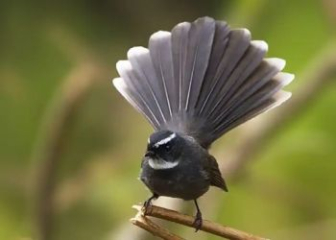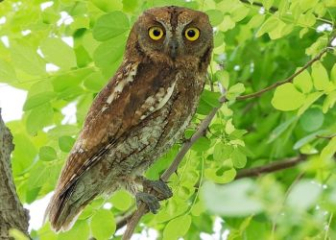Indian Blue Peafowl - The Most Beautiful Bird in the World
Blog | by
The Indian Blue Peafowl impresses with its long, brilliant tail feathers with a unique “peacock eye” pattern, symbolizing luck, prosperity and wealth.
The Indian Blue Peafowl (scientific name: Pavo cristatus) is one of the most beautiful ornamental birds in the world with a long, colorful tail and a friendly temperament. In feng shui, peacocks also represent prosperity, luck and wealth, and are often raised in villas or ecological reserves and parks.
So what is so special about the Indian peacock? What should be noted when raising them? The article below by nicebirds will answer all questions for everyone, from the origin, habits to techniques, prices of this special bird species, let's find out now!
Indian Labor Information :
|
Scientific name |
Pavo cristatus |
|
Common name |
Indian Peacock, Peacock, Peacocks, Peacocks |
|
Source |
South Asia |
|
Set |
Galliformes - Order of Chickens |
|
Surname |
Phasianidae - Pheasants |
|
Size |
2 - 2.3m |
|
Lifespan |
4 - 6kg |
Origin of Indian Peafowl
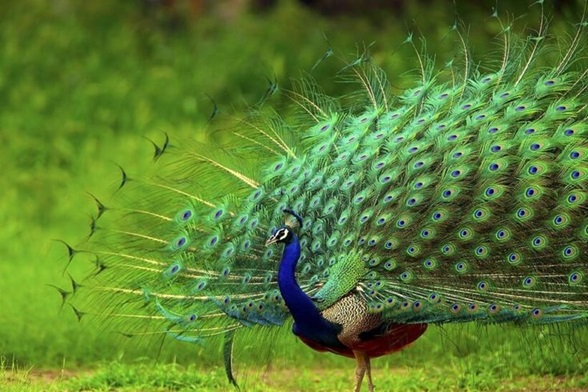
The Indian peacock is a beautiful looking bird.
The Indian peacock, also known as the peacock, is a bird of the Pheasant family, native to the Indian subcontinent such as India, Sri Lanka, Nepal,...
According to ancient Indian history, the peacock has appeared since ancient Hindu times through the Vedas and the epic Mahabharata. And in 1963, the peacock was considered the “National Bird of India”, symbolizing the pride, grace and diverse culture of this Muslim country.
Nowadays, in addition to its native area, peacock has been introduced to many countries around the world such as Europe, Asia, the Middle East and America.
In Vietnam, they are raised in zoos and conservation areas and are called by the short name "peacocks".
How to distinguish between male and female peacocks
The Indian peafowl is one of the most striking and impressive looking birds in the world. However, the male and female peafowl have completely different appearances. Find out more here!
Male peacock appearance
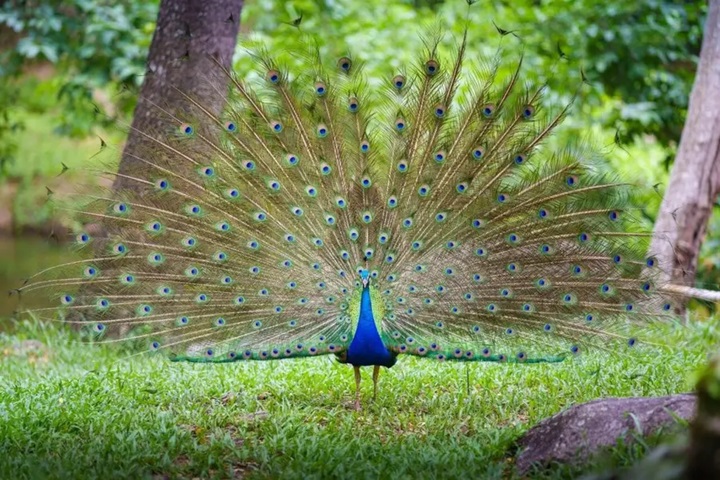
Impressive view of a male blue peacock spreading its tail.
Male Indian peacocks always have a more brilliant and splendid appearance than female peacocks, specifically as follows:
- Size 2 - 2.3 m (including tail)
- Weight 4 - 6 kg.
- The head and neck are metallic blue, shimmering when light shines on them.
- The chest and back vary from blue to green, with a metallic sheen.
- The tail feathers extend up to 1.5 m, dotted with unique “peacock eye spots” in blue, yellow, copper or brown. This is also the most prominent feature of the blue peacock. When the tail is spread, it forms a wide semicircle. The feathers fall out slightly, looking very beautiful.
- The top of the head has a very prominent fan-shaped crest of long feathers.
- The beak is light gray, the legs are gray, and have sharp spurs.
Appearance of female peacock
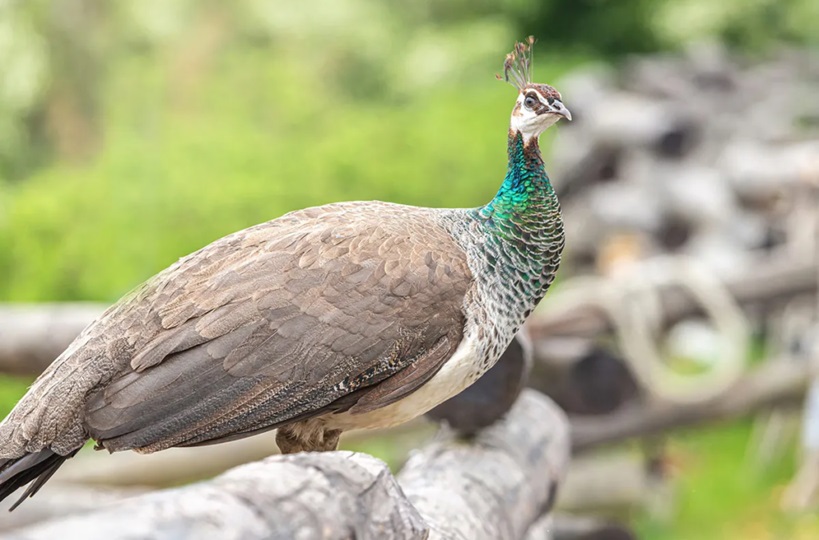
The rustic look of a female peacock.
Female Indian peacocks are usually paler and more modest in color than males. Specifically as follows:
- The fur is greyish brown to reddish brown, the belly will be lighter in color.
- The head and neck have a light blue sheen but are not as bright and iridescent as the peacock.
- No long tail, no peacock eye pattern.
- The top of the head still has a fan-shaped crest but is smaller and simpler.
Characteristics and behavior of the Indian blue peacock
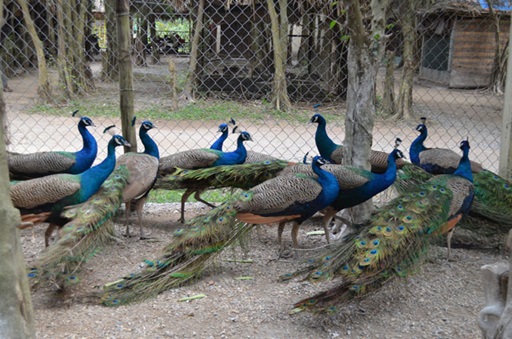
Indian peacocks like to live in herds.
Like to live in a pack
Indian peafowl usually live in small groups of 5-10. However, during the breeding season, they separate to "court" and attract female peafowls. After the breeding season, they gather together again.
Communicate by sound
Peacocks have a very loud and far-reaching call, sounding like “meow-ow” or “aaa-ee”. They often call in the early morning, late afternoon or when it is about to rain. Therefore, peacocks are considered a fairly accurate “weather forecast” bird.
Flirting by spreading tail
Male peacocks often spread their tails, shake them slightly, and make rustling sounds to attract peahens. This courtship action usually occurs in the early morning or at dusk, when their plumage is most prominent.
Always sleep high up
Although peacocks are land birds and have quite large bodies, they often choose to sleep in tall trees or safe places to avoid predators and carnivores at night.
Usually in the evening, they will fly up high to sleep and then fly back down to the ground the next morning.
Seasonal shedding
Every year, male peacocks shed their long tail feathers after the breeding season. This process takes a few weeks, after which they grow new feathers in preparation for the next breeding season.
Sensitive to light
Peacocks are very sensitive to strong light, they only like soft light. This is also the reason why they usually only spread their tails in the early morning or at dusk.
Male peacocks are highly territorial during the breeding season.
During the breeding season, male peacocks are often very territorial. They may make alarm calls or use their beaks and spurs to attack strangers.
Requirements when raising peacocks as pets

An Indian blue peacock with a unique and super beautiful appearance.
Raising Indian peacocks as pets is not too difficult, but if you want them to grow well, live long, and have the most beautiful feathers, you need to meet the following basic requirements:
Suitable living space
Because Indian peacocks are large and need a lot of space to move around, spread their tails and fly, you need to prepare a cage or spacious garden that meets the following basic criteria:
- Minimum height from 2 - 2.5 m.
- The cage should have trees or perches so that the peacocks can jump up and sleep on high like in the natural environment.
- Living space needs to be quiet, with little noise and dust to make people feel safe.
- If raised in a cage, the cage floor needs to be well-drained, always dry, not damp or stagnant.
- Daily need to clean feces, change drinking water, clean food trough.
- Periodically disinfect the cage with lime powder or disinfectant to limit the growth of disease-causing bacteria.
- A separate sunbathing area is needed as peacocks love to sunbathe.
- The cage needs to have a separate covered area so that the peacocks can avoid the hot sun at noon.
Provide a balanced diet
Peacocks are not fussy about their diet, they can eat many different types of food, typically as follows:
- Main foods: Cereals, rice, corn, brown rice, chicken bran, chopped vegetables, worms, crickets and cooked minced meat.
- Drinking water: Clean water should be provided and changed daily.
- Supplement: Vitamins and minerals periodically, especially during the reproductive stage.
Indian peacock breeding techniques
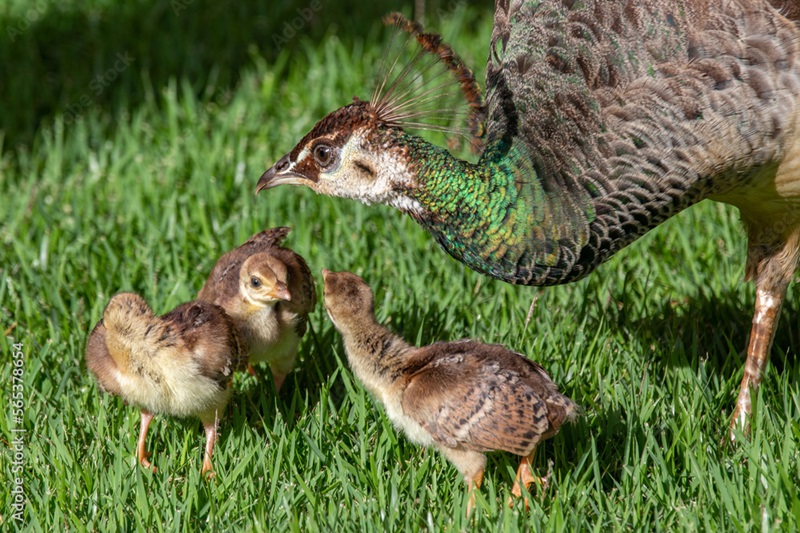
Mother peacock and her baby peacocks.
Breeding peacocks for breeding is not as simple as raising them as pets because they require more techniques in each stage from selecting breeds, mating to hatching. Please follow the detailed instructions below!
Choose a father and mother
For Indian peacocks to reproduce well, you need to choose a suitable parent pair that meets the following criteria:
- Male peacock (father): Choose a peacock that is 2 years old or older, in good health, with long, even, beautiful tail feathers, many peacock eyes, and has the behavior of spreading its tail and actively courting.
- Female peacock (mother): Choose peacocks 1.5 years old or older, with strong body and smooth feathers.
Note: For successful breeding, it is best to maintain a ratio of 1 male to 2 - 4 female peacocks.
Prepare breeding barn
To help the peacock reproduce well, you need to pay attention to preparing the barn. Please note the following!
- Spacious, airy area, minimum 15m2/for 1 breeding pair.
- Dry ground.
- Prepare a nest with straw and dry leaves, place in a quiet place.
- Prepare more beans, shade and separate food and water troughs.
Mating time
Peacocks usually mate in spring and summer (around March to July). When mating, the male peacock will spread his tail, call loudly, and vibrate his feathers to attract the female peacock. If the mating is successful, the female peacock will lay eggs after about 2 weeks.
Incubation and care of baby birds
The process of incubation and care of baby birds will take place as follows:
- Each brood of female peacocks lays 4 - 7 eggs and the special thing is that she will lay every other day, every 1 - 2 days she will lay another egg so you need to pay close attention.
- After laying eggs, you can let the hen incubate the eggs yourself or artificially incubate them for a higher hatching rate.
- Baby birds need to be kept warm in the first 2 weeks, the cage should be kept clean, lined with soft paper or cloth and changed daily.
- Feed baby peacocks boiled egg yolks and fine cereal powder for the first week. After that, you can feed them chopped vegetables, multivitamins, etc.
Common diseases in Indian peacocks and their treatment
Although Indian peacocks have quite good resistance, they can still get some common diseases due to unsanitary environment, damp cages, unbalanced diet,... Here are some common diseases in peacocks, let's learn to know how to recognize and treat them effectively.
|
Disease name |
Reason |
Symptom |
Treatment |
|
Diarrhea |
E. coli bacteria Wet environment, unhygienic Food is spoiled, not guaranteed quality |
Peacocks have loose stools that are white or green in color. Peacock ruffled feathers, lethargic, lazy, lazy to eat |
Clean food and water troughs every day Add garlic and probiotics to your food regularly. Use antibiotic Coli – Stop to mix with drinking water. |
|
Respiratory disease |
Unstable weather, strong winds, damp cages |
Wheezing, runny nose Peacocks open their beaks to breathe. Lazy, just like to stand still |
Keep the barn cool, dry and free from strong winds. Use respiratory antibiotics such as Tylosin, Gentamycin according to the recommended dosage. |
|
Newcastle disease |
Dangerous virus, spreads very quickly |
The worker walked unsteadily, his neck twisted to one side, and his legs paralyzed. Diarrhea, difficulty breathing and even death |
Periodic vaccination against chicken disease - Lasota Isolate the disease from the herd. Destroy dead animals to prevent the spread of disease. |
Below is the recommended vaccination schedule for Indian peacocks, you can refer to it.
- 1 week old chicks: Newcastle Lasota, Bio-C
- 2 - 4 weeks old: First deworming
- 2 months old: 2nd deworming, Newcastle Lasota booster shot
- Periodically: Need to clean the barn, mix in probiotics, add vitamins to food and drinking water to increase resistance for workers.
Some places to preserve and raise blue peacocks in Vietnam
Currently, in Vietnam, raising Indian blue peacocks is not really popular because it is expensive and requires good conditions and techniques. Therefore, if you want to see these beautiful peacocks with your own eyes, you can refer to some of the following places!
- Zoo in Ho Chi Minh City : Where peacocks are raised freely in a spacious space for visitors.
- Cuc Phuong National Park - Ninh Binh : Peacocks are raised in a semi-wild area and visitors can freely admire them. Besides the blue peacock, there are also red peacocks, green peacocks and white peacocks.
- Tra Su Eco-tourism Area - An Giang : Indian peacocks are raised to serve tourism, creating a highlight.
- Some large private bird farms : Thanh Tam bird farm in Binh Duong, Minh Long public farm in Hoa Binh,...
Interesting facts about Indian blue peacock
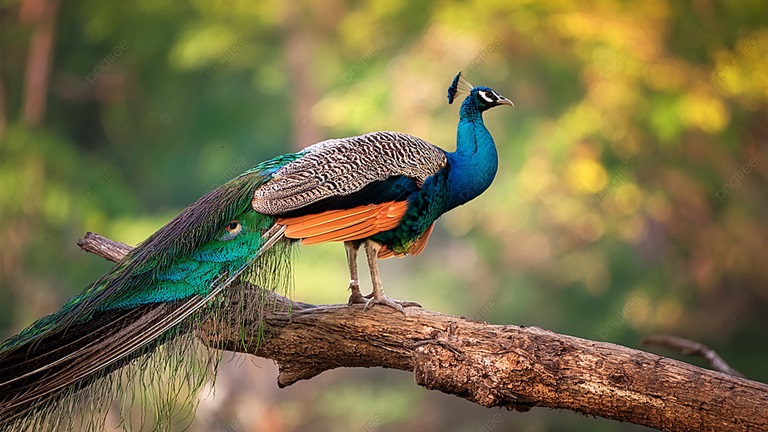
Peacock symbolizes luck, fortune and nobility.
Below are some interesting facts about peacocks that you may not know, let's find out more!
- According to Hinduism, the peacock is also a symbol of Kartikeya - son of Shiva.
- In Buddhism, the blue peacock symbolizes wisdom and purity.
- In China, the peacock symbolizes wealth and status.
- The flamboyant, flared tail feathers that we call the “tail” are actually the feathers that cover the tail, not the actual peacock’s tail.
- Each male peacock has a different "peacock eye" pattern, no two are alike.
- Despite its large body, peacocks are still able to fly short distances.
- Most people call peacocks “Peacocks” but this is the correct name for male peacocks, female peacocks are called “Pahens” and the common name for peacocks is “Peafowl”.
Indian peacock price list
Currently, Indian peacocks are sold in Vietnam at many different prices, depending on age, color and gender. Please refer to the following price list for more specific prices!
|
Peacock species |
Reference price (VND/piece) |
Note |
|
Indian Peacock breed (1 - 2 months old) |
800,000 - 1,500,000 |
The older the price, the higher the price |
|
Young Indian Peafowl (2 - 4 months old) |
1,500,000 - 2,500,000 |
Gender neutral |
|
Adult Indian Peafowl (over 12 months old) |
5,000,000 - 12,000,000 |
Price depends on the beauty of the peacock feathers |
Note when buying peacocks :
- Only buy from reputable farms to ensure legal origin.
- Require the seller to provide documents proving the origin and health status of the peacock.
- Observe the appearance carefully to buy a healthy, smart peacock without health problems.
Questions and answers about Indian peacock?
What does the peacock represent?
In Vietnamese culture, the peacock is a symbol of wealth and prosperity. In feng shui, the peacock represents nobility and rebirth.
Where should peacock paintings be hung?
You can hang peacock paintings in the bedroom, living room or even the office. It should be hung in the Southeast or Northeast direction.
Which destiny is suitable for peacock painting?
In feng shui, the painting belongs to the metal element, so it is suitable for people with the metal element, which generates the water element.
What does a peacock tattoo mean?
Peacock tattoos often symbolize new beginnings and good luck and prosperity.
Indian peacock image
Let's admire the series of super beautiful and colorful Indian peacock images that we have compiled below to understand why this bird is so expensive and loved.
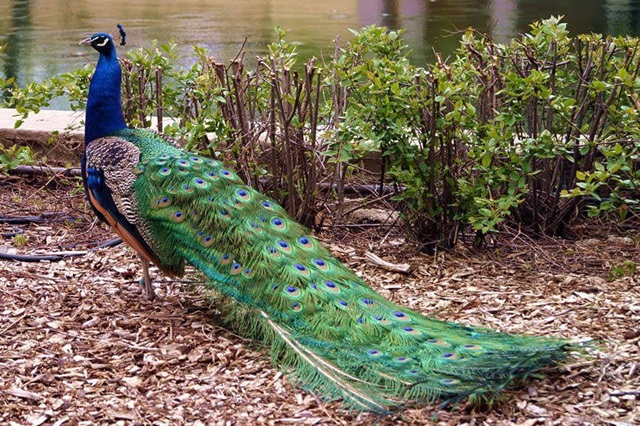
A male peacock has a super long tail.
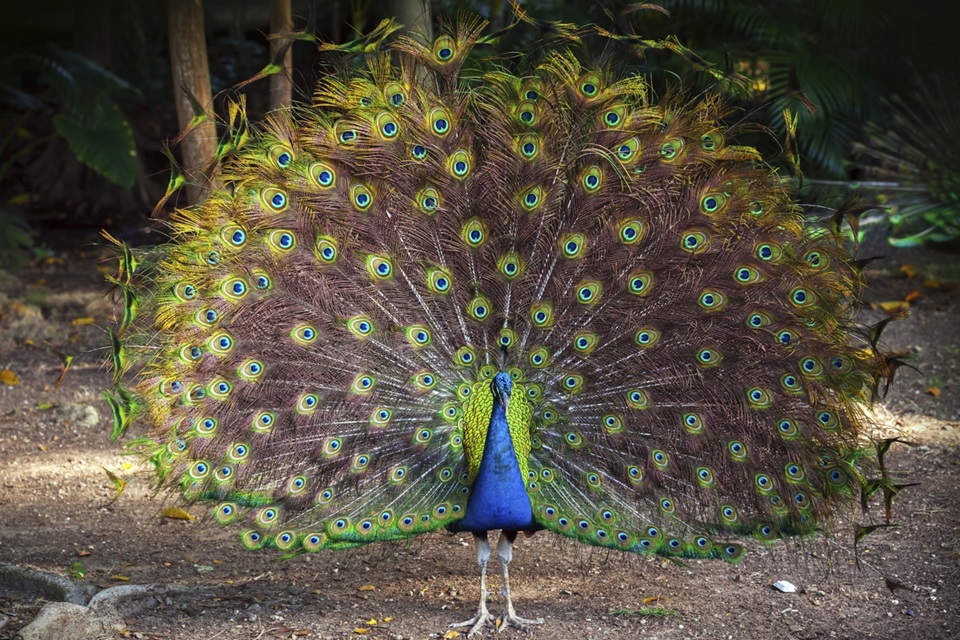
A peacock is spreading its tail beautifully.
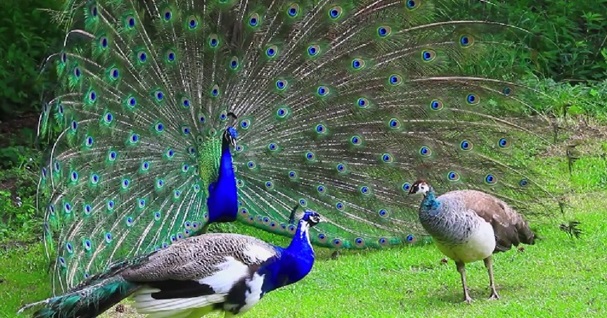
The peacocks are gathering together.
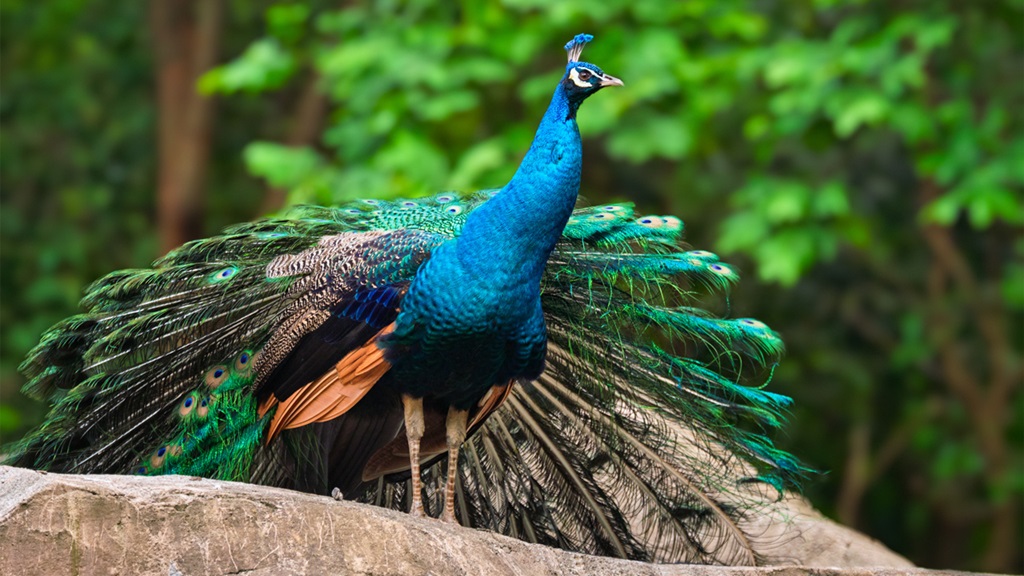
An Indian blue peacock with super beautiful feathers.
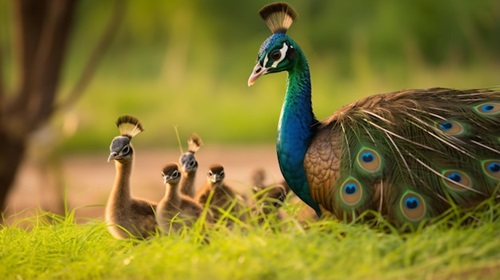
Indian peacock and its super cute baby peacocks.
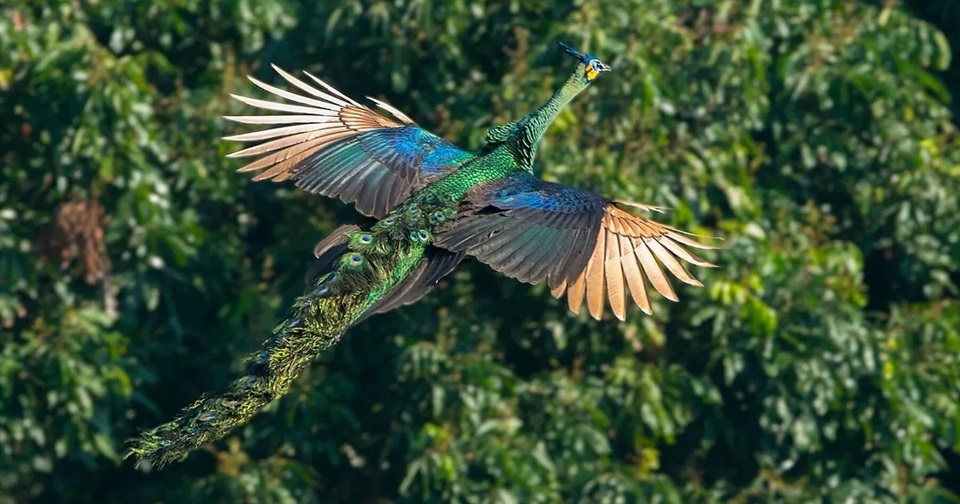
Rare image of a blue peacock spreading its wings and flying.
Through the above article, nicebirds.net has shared with you information related to the Indian blue peacock - a species of ornamental bird with the most beautiful and splendid appearance. Hopefully you have learned more about this bird and grasped basic information about its origin, appearance and habits. If you want to observe peacocks in real life, please visit the locations we have shared above.
Don't forget to visit our Blog section to learn more about other beautiful bird species.

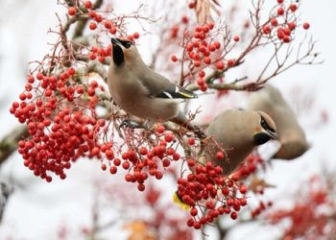

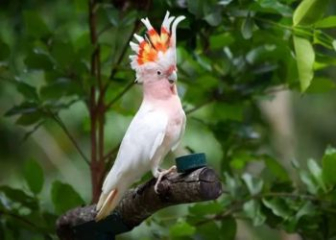
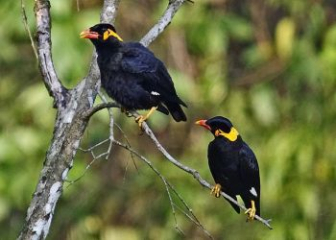
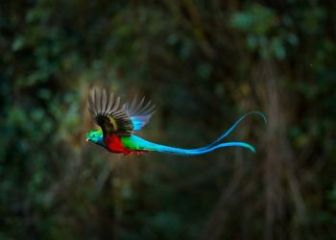





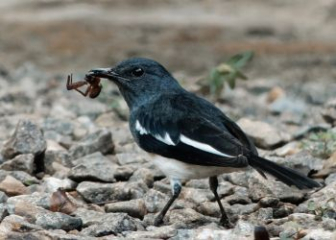
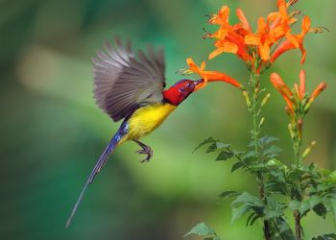


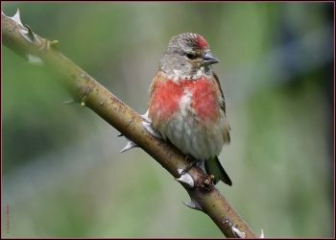
_350x250.jpg)
